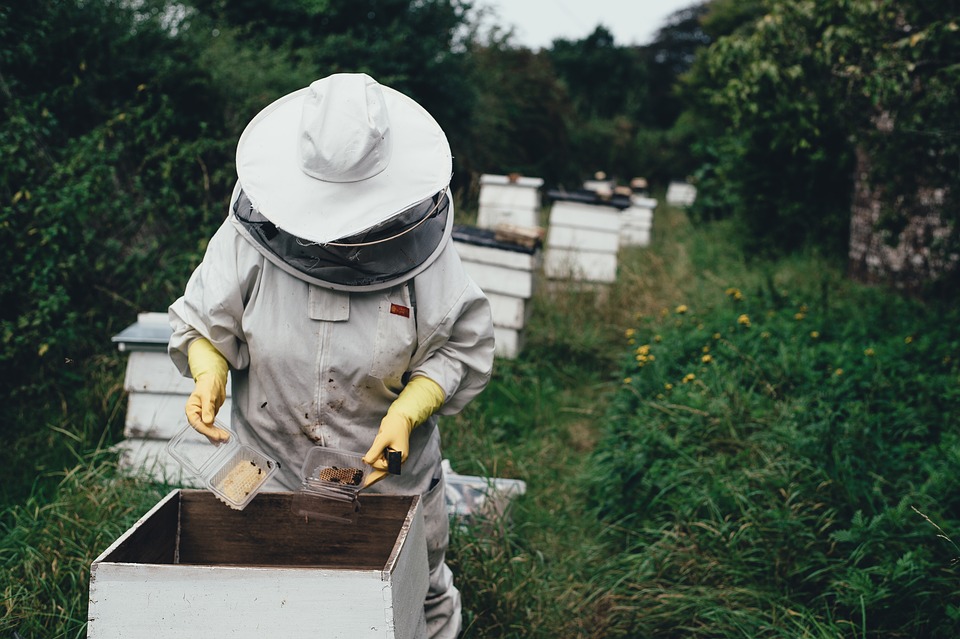30
Jul
Trump Administration Dealt Multiple Blows to Honey Bees this Month
 (Beyond Pesticides, July 30, 2019) Earlier this month, the U.S. Environmental Protection Agency announced a decision to register new uses for the bee-toxic pesticide sulfoxaflor. The decision closely followed a USDA announcement halting the Honey Bee Colonies Survey, combining blows to already suffering beekeepers. According to the nonprofit Bee Informed, this past winter tallied the most colonies lost in a decade—an estimated 37% between October 1, 2018 and April 1, 2019.
(Beyond Pesticides, July 30, 2019) Earlier this month, the U.S. Environmental Protection Agency announced a decision to register new uses for the bee-toxic pesticide sulfoxaflor. The decision closely followed a USDA announcement halting the Honey Bee Colonies Survey, combining blows to already suffering beekeepers. According to the nonprofit Bee Informed, this past winter tallied the most colonies lost in a decade—an estimated 37% between October 1, 2018 and April 1, 2019.
“Proposing to register sulfoxaflor for use on bee-attractive crops, in the midst of an ongoing pollinator crisis, is the height of irresponsibility,” said Drew Toher, community resource and policy director for Beyond Pesticides in an interview for Bloomberg Environment. “When all of the available data points to significant risks to pollinators from use of this chemical we must face the facts: EPA is working towards the protection of pesticide industry, not the environment,” he said.
Sulfoxaflor is a systemic insecticide whose mode of action is the same as neonicotinoid pesticides. After application, the chemical is absorbed and distributed throughout the plant, including pollen and nectar. These insecticides are selective agonists of insects’ nicotinic acetylcholine receptors—they bind to the receptor and cause it to activate. The impact on foraging bees is generally sublethal but devastating on a population level.
A 2018 study published in Nature, “Sulfoxaflor exposure reduces bumblebee reproductive success,” stated, “There is an urgent need to pre-emptively evaluate the potential sub-lethal effects of sulfoximine-based pesticides [i.e. sulfoxaflor] on pollinators, because such effects are rarely detected by standard ecotoxicological assessments, but can have major impacts at larger ecological scales.”
A 2015 lawsuit headed by beekeepers resulted in a 2016 registration that specifically excluded bee-attractive crops such as cotton and sorghum. However, EPA regularly utilized the “emergency exemption” rule under Section 18 of the Federal Insecticide, Fungicide, and Rodenticide Act (FIFRA) to circumvent restrictions, criticized by environmental advocates.
EPA claims, based on mostly industry-financed studies, that sulfoxaflor presents a lower risk for non-target wildlife than alternatives, and that it “disappears” from the environment faster than alternatives such as organophosphates. It is worth noting that this lesser-of-two-evils logic is a false dichotomy, and chemicals may not disappear but rather break down into metabolites that can be more toxic than the predecessor. EPA’s own assessment names that sulfoxaflor as “highly toxic” to honey bees.
A European Food Safety Authority (EFSA) peer review of pesticide risk assessment for sulfoxaflor, approved February 2019, found a high risk for honey bees and bumblebees in field applications. France disallowed the use of sulfoxaflor in 2017 based on the precautionary principle, a practice that suggests a social responsibility to use discretion when scientific investigation indicates a possibility of harm or for which their is uncertainty. The U.S. administration, in juxtaposition, is turning a blind eye to the potential damage that this and other chemicals cause to pollinators, according to advocates.
As stated in Beyond Pesticides’ coverage of USDA’s honey bee data collection shutdown, “Permitting [sulfoxaflor’s] use and then ceasing to collect and report data on the status of honey bees that are likely to be impacted is not only a recipe for kneecapping the study of bee decline and imperiling the food supply, but also, another example of the corruption for which this administration is infamous.”
Current law allows chemical lobbyists to unduly influence EPA decisions, causing a bias in favor of pesticide dependency instead of incentivizing alternatives like organic practices and products. The Saving America’s Pollinators Act (H.R.1337) will cancel specific bee-toxic pesticides and reshape the EPA process for permitting pesticides. Ask your elected U.S. Representative in Congress to support pollinators by cosponsoring Saving America’s Pollinators Act (SAPA). If they are already a cosponsor, use the occasion to thank them for their leadership on this critical issue.
All unattributed positions and opinions in this piece are those of Beyond Pesticides.
Source: Bloomberg










